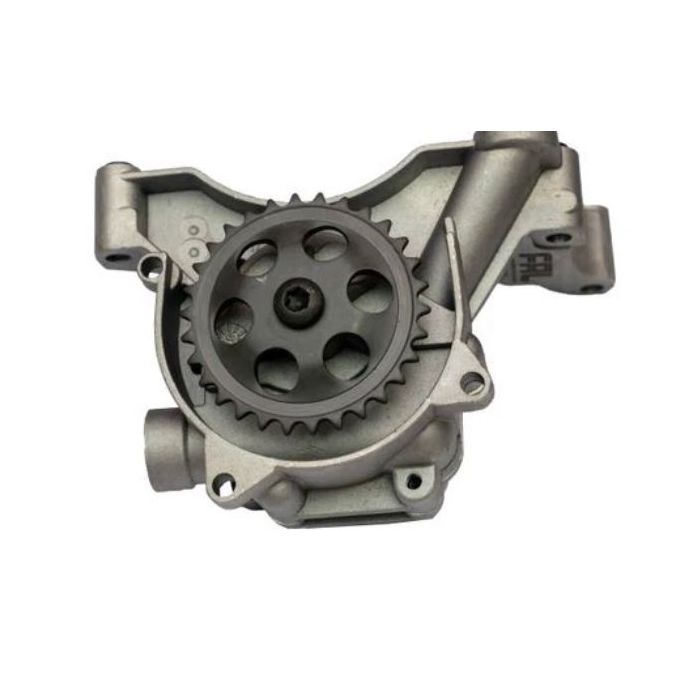Guarantee peak efficiency with a properly functioning clp engine.
Guarantee peak efficiency with a properly functioning clp engine.
Blog Article
Exactly How a Clp Engine Can Enhance Performance in Numerous Industries
The introduction of CLP engines marks a substantial change in operational performance across numerous markets, driven by their capability to maximize gas intake and lessen downtime. Industries such as manufacturing and logistics stand to obtain considerably from their robust layout and regular power result, which assure to improve procedures and improve performance. As organizations significantly prioritize sustainability along with efficiency, the function of CLP engines becomes even extra important. What remains to be seen is just how these innovations will certainly form the future landscape of industrial operations and their influence on broader economic patterns (clp engine).
Summary of CLP Engines
CLP engines, or Constant Liquid Propellant engines, represent a significant development in propulsion technology, specifically for room applications. These engines use a constant feed system that enables the sustained expulsion of propellant, bring about boosted effectiveness and performance compared to traditional solid or hybrid propulsion systems. By keeping a constant circulation of fluid propellant, CLP engines can accomplish much more precise thrust control, which is critical for maneuvering spacecraft in numerous objective circumstances.
The design of CLP engines integrates sophisticated materials and cutting-edge gas administration systems. clp engine. This results in minimized weight and boosted dependability, necessary elements for long-duration room goals. The continuous procedure lessens the threat of burning instability, a typical challenge in conventional rocket engines.

Benefits in Production
The manufacturing of Constant Liquid Propellant (CLP) engines offers a number of noteworthy advantages that boost both effectiveness and cost-effectiveness. Among the primary benefits is the streamlined manufacturing procedure, which decreases the complexity associated with traditional propulsion systems. By using liquid propellant, suppliers can accomplish better precision in engine performance, causing optimized power output and lowered waste.
Furthermore, CLP engines promote a greater degree of modularity, enabling easier assimilation right into different production lines. This adaptability can significantly lower lead times and boost general functional adaptability. The use of CLP technology additionally tends to reduce the need for substantial upkeep because of less moving components, which translates right into minimized downtime and functional expenses.

Applications in Logistics
Leveraging Continuous Liquid Propellant (CLP) engines in logistics supplies substantial advantages in operational efficiency and reliability. These engines supply a robust remedy for numerous transport demands, allowing the smooth motion of goods across huge ranges. The inherent design of CLP engines enables constant power output, which equates right into smoother and much more predictable transport schedules.
Among the crucial applications of CLP engines in logistics is in sturdy products transportation, where they can drive both ground and aerial cars. Their capacity to keep high efficiency under varying tons conditions ensures that shipment timelines are fulfilled, thereby boosting customer complete satisfaction. Furthermore, CLP engines can be integrated into automated logistics systems, assisting in real-time tracking and optimizing path planning.
Furthermore, the longevity Full Report of CLP engines reduces upkeep downtime, permitting logistics firms to optimize their functional capacities. This is especially advantageous in warehousing procedures, where efficiency in handling and delivering products is critical. As logistics continues to advance, the combination of CLP engines stands for a forward-thinking method that not only improves performance but also supports the sector's growing needs for integrity and speed.
Influence On Power Effectiveness
Exactly How do Continuous Fluid Propellant (CLP) engines boost energy performance in transport? CLP engines make use of a consistent circulation of fluid fuel, enhancing burning processes and maintaining a steady drive outcome. This design lessens power losses related to standard combustion engines, where gas delivery can differ and lead to ineffectiveness.
The constant procedure of CLP engines permits an extra reliable thermal cycle, resulting in higher certain impulse compared to traditional engines. clp engine. This translates to lowered fuel intake for the same amount of job done, considerably decreasing operational costs across various transport industries, including air travel and maritime industries
Additionally, the capacity of CLP engines to keep optimum efficiency under additional resources differing lots conditions minimizes the demand for frequent acceleration and slowdown, even more improving fuel effectiveness. Improved power efficiency not just contributes to set you back savings yet additionally results in decrease greenhouse gas discharges, straightening with global sustainability objectives.
Future Trends and Innovations
Emerging innovations in Continuous Liquid Propellant (CLP) engine modern technology assurance to reinvent the landscape of transportation efficiency and sustainability. As markets pivot towards greener choices, CLP engines stand at the leading edge, incorporating ingenious materials and design approaches that boost performance while minimizing environmental influence.
Among the most appealing fads is the fostering of crossbreed systems that incorporate CLP engines with eco-friendly energy sources. This harmony can optimize gas usage and lower exhausts, straightening with worldwide sustainability goals. Developments in computational liquid dynamics (CFD) are facilitating the design of even more aerodynamically efficient engines, leading to minimized drag and enhanced gas effectiveness.
In addition, the development of clever surveillance systems is readied to boost functional performances. These systems utilize data analytics and IoT innovation to maximize engine performance in real-time, ensuring that the engines run within their most efficient specifications.
As study remains to discover different propellant formulas-- such as biofuels and artificial gas-- the future of CLP engines looks encouraging. By harnessing these advancements, sectors can not only boost their performance but also add dramatically to a cleaner, extra lasting future in transport.
Conclusion
In conclusion, CLP engines stand for a significant advancement in effectiveness throughout multiple sectors. The combination of innovative materials and fewer relocating components minimizes upkeep needs, while placement with sustainability objectives settings CLP engines as a crucial technology for the future.
Report this page